Prof. Chris Bailey
Director of Computational Mechanics and Reliability Group
University of Greenwich
40th International Electronics Manufacturing Technology (IEMT) Conference 2024
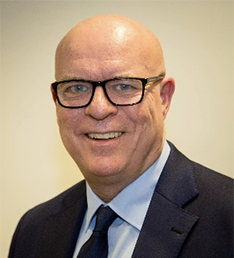
Prof. Chris Bailey
Director of Computational Mechanics and Reliability Group
University of Greenwich
Keynote – Design Challenges for Advanced Packaging to enable a Smart and Energy Efficient World
Abstract: The Electronics Packaging Society (EPS), through its strategic plan (2019-2024), is supporting the Heterogeneous Integration Roadmap (HIR), which contains 23 chapters covering future trends and innovations in electronics packaging. Co-Design methodologies and Modelling/Simulation tools are a key part of this roadmap, which details the need for new developments in these enabling technologies. Heterogeneous Integration, through Advanced Packaging, is a critical enabling technology for future electronic systems to enable a smart world. The 2021 edition of the HIR details the technical challenges and potential solutions for advanced packaging and its applications over a 15-year timeframe. In terms of design and modelling/simulation, there is a need for new methodologies – including co-design, multi-physics, and AI – to address these challenges. This presentation will discuss the state-of-the-art in co-design and modeling tools, the challenges that need to overcome, and potential technical solutions to these challenges for the design of future electronic systems.
Biography: Chris Bailey is junior-past President of the IEEE Electronics Packaging Society and Director of the Computational Mechanics and Reliability Group at the University of Greenwich, UK. He has a PhD in Computational Modelling and an MBA in Technology Management and has published over 300 papers on the Design and Simulation of Electronics Packaging. Chris has served on several external government committees, which includes the 2014 UK Research Excellence Framework, to assess research outputs and research impact across UK universities. He is a member of the EPSRC College (UK Equivalent to the NSF in the USA); and associate editor for the IEEE Transactions of Components, Packaging, and Manufacturing Technology. He is also co-chair for the modeling and simulation technical working group on the Heterogeneous Integration Roadmap.
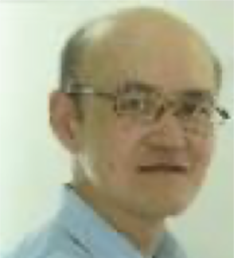
Mr Chew CH
Senior Director
OnSemi
Keynote – Intelligent Power and Sensing Solutions for EV
Abstract: Vehicle electrification, autonomous driving, renewable energy and big data are enabling unprecedent changes in human life and are pushing the technology to new limits.
In particular for Electrical Vehicles, those major evolutions require power electronics and sensing solutions, driven by optimum technology and packaging solutions to deliver maximum product efficiency.
This talk will review recent progress of packaging technology and how this is to address various new challenges.
It will illustrate the challenges of simultaneously meeting a wide range of power density, product scalability, cost and reliability requirements. These are made possible by the ongoing development in semiconductor research, engineering and manufacturing.
Biography: Ch Chew started his career with Motorola and now a Senior Director for ON Semiconductor. He is taking care of Package Development for Malaysia, Vietnam, Shenzhen and Munich. He has 80 issued and pending US patents. He worked with Prof Seeta to start up Malaysia IEEE CPMT chapter. He was first general chair for IEMT Malaysia 2006. He started PIM and EV power modules for ON Semiconductor including dual side cooling flip chip sintering package, single side direct cool SiC package, in house image sensor package and various package solutions for EV and power mosfet.
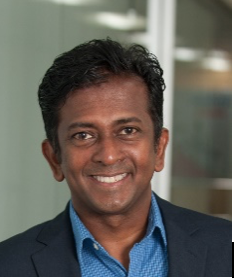
Mr Subagaran (Suba) Letchumanan
Vice President, Manufacturing and Product Engineering
Intel Corporation (Penang)
Keynote – Advanced Packaging – challenges in Testability and Diagnosis
Abstract: We are moving into the era of heterogenous product integration to keep extending Moore’s Law. Industry is moving at rapid pace to build chips using various advance packaging technology by combining chiplets from different process node and technology. Heterogenous integration have significant impact on production test, both at wafer level and at final test. Debug and fault isolation is a key aspect when come to test. Heterogenous integration has created multiple challenges in physical debug, fault isolation and dealing with field returns. A known good die (KGD) does not mean all shipped bare die will pass at package and system. The final package integration will need to deliver high quality and high yield packaged products.
This keynote provides an overview of test and debug complexity and its economics brought about by heterogenous integration and what are the existing best-known method to build a manufacturable product with chiplets. We will need a high degree of innovation and collaboration among the industry to address all these challenges.
Biography: Suba is 24-year Intel veteran with vast experience across all manufacturing product development functions having successfully led global product development teams on Chipsets, ATOM SOCs, and High-Performance Computing (HPC). He has deep exposure across all Manufacturing/Test development functions and expertise spanning across DFT, ATE test solutions, customer engagement, and silicon characterization. In his current role, Suba manages manufacturing product development operations in Malaysia across various business segments.

Dr.Veer Dhandapani
Senior Director of Product Development
NXP Semiconductors
Keynote – Semiconductors for Smart Connected Devices
Abstract: The evolution of our way of life in the past few decades have been heavily influenced by waves of semiconductor innovation in processing power on the one hand, and connectivity on the other. More than making devices “smarter”, the last decade has seen the quest transform into creating products that are smarter than any stand-alone device could be and bring AI into the mainstream. This quest has spurred innovation and remade the definitions of even our most basic needs in society. Connectedness of everything we do – what we eat, what we wear, how we communicate, how we commute, how we work, where we need to be, all drive innovation along multiple axes. We, as consumers of all this innovation, are the point of convergence of these tangents and how we experience it shapes the next wave of innovation. This keynote will focus on this next wave and how artificial intelligence, connected devices large and small (from cars to wrist watches) are spurring innovations in product designs and packaging technology. We will discuss how technology innovation, specifically packaging, will enable the Sense, Think, Connect and Act product paradigms and make possible a whole new world of use cases, in the home, in the car, and in industrial and retail environments.
Biography: Veer Dhandapani, Ph.D. is a Senior Director of Packaging Innovation in charge of High Performance Mixed Signal packaging technology development (NXP Semiconductors). He has delivered multiple innovative product solutions such as the industry’s first Automotive Grade 1 long range 77GHz automotive radar in WLCSP. Prior to that, Veer was involved in silicon technology development for novel devices, high-k gate dielectrics and non-volatile memory technology with numerous presentations and patents. He received his Ph.D. in Materials Science and Engineering from University of Cincinnati and an M.B.A. from the University of Texas at Austin.
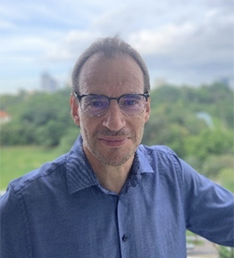
Mr. Laurent Herard
Group VP – Head of Back End Manufacturing and Technology R&D
STMicroelectronics
Keynote – Packaging Innovation – A key enabler for a smart world
Abstract: Electronics industry has been evolving from a “hardware centric” application to a “user centric” application, leading the electronics system design from a “component assembly” to a “system integration” approach. New interconnection design and solutions are needed.
Wafer level packaging, fan in and fan out WLCSP mainly, is being widely adopted to build highly miniaturized IoT mobile electronics hardware. Fan in WLCSP is becoming a dominant packaging solution for low to medium pin count IC in wearable and mobile electronics while fan out is quickly gaining popularity for application processor in personal electronics and 77 GHz radar chip for automotive.
System in Package (SiP) is making the buzz in our industry. The concept of Multi Chip Module (MCM) or Multichip Package (MCP) has been brought to real products in the early 2000’s. Up to recently, the silicon nodes roadmap and the mixed technology progresses have made System On Chip (SOC) the winner for system design.
IoT is everywhere. With about 45 billion connected objects at the end of 2021, our society is on the way to a fast digital transformation. The performance requirement for data server and Artificial Intelligence (AI) drives the adoption in mass production of the most advanced interconnect technologies such TSV for memory cube, 2.5D interposer with ultra-fine pitch flip chipped IC and mixed CMOS nodes.
Automotive is another “hot” topic for today packaging industry. Semiconductor solution is the key to achieve a safer, greener and more connected driving experience. Processing power embarked in latest generation cars keeps increasing and advanced packaging solutions, designed for high end consumer computing, are being tuned and qualified for automotive. This is typically the case of fine pitch flip chip or 2.5D used to package ADAS processors.
Packaging industry is enjoying a formidable innovation momentum. Electronics for a smart world is leading to a convergence of packaging R&D among applications. A laser sensor package for mobile phone is requiring development of high thermal conductivity die attach material, designed for power IC, while latest generation ADAS chip will require a fine pitch copper pillar flip chip package, traditionally used for consumer computing processor. This convergence is the opportunity for more cross-fertilization to boost packaging R&D and a lot of “technical fun” for the packaging engineers.
Biography: Laurent Herard is Group VP – Head of the Back End Manufacturing & Technology R&D at STMicroelectronics. He is located in France.He received an Engineering Degree in physics of semiconductor from the INP Grenoble France. Laurent has thirty years of experience in Packaging technology R&D and Back End assembly manufacturing in Europe, Morocco, Singapore, and Malaysia
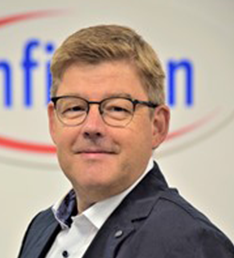
Bernhard Knot
Head of Backend Innovation Infineon
Keynote – Success Factors for innovative and reliable Package Solutions
Abstract: Global Megatrends like demographic & social change, climate change & resource scarcity, urbanization as well as digital transformation underline the importance of electronics. These Megatrends are shaping the automotive market which result in a significant increase of semiconductor content per car. In addition system in package integration is becoming more and more important in assembly and package industry. We observe integration of more functionality into packages of smaller volume in nearly all kind of electronic applications. As dimensions get smaller and smaller we face changing requirements for package materials. A sustainable and deep knowhow on materials and interfaces will be the key for successful future developments. Understanding and control of material interaction (chemistry, thermo-mechanical) and thermal management are key enabling factors for a quick market introduction of new products. In the last 10 years all package materials changed and this trend will proceed. For development of a new package and package technology understanding and modeling the coherence for Chip – Package- Board Materials will make the difference for reliable system integration.
This presentation will introduce System integration solutions with respect to concepts, materials and processes and will show success factors for innovative and reliable Package Solutions enabling fast commercialization.
Biography: Bernhard Knott is the Head of the Infineon Technologies Backend Innovation group. He is responsible for new Package Concepts, Prototyping, new Materials, Simulation and Virtual Prototyping. Until 2016 he was leading the Package Development for Sensors and Wafer level Package Development in Regensburg, Germany. Prior joining the Backend Organization, he held several Management Position in Frontend Technology dealing with BiCMOS Technologies, Sensors and Innovation projects. After receiving his Diploma in Physics from the University of Regensburg, he started his career in Semiconductor Industry in 1997 in developing an embedded NVM Technology. Bernhard holds several patents and patent applications in the area of FE Technology, Sensors and Packaging.
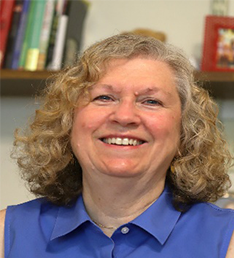
E. Jan Vardaman
President and Founder of
TechSearch International, Inc
Keynote – Electronics Industry Growth Markets: Package Choices, Challenges, and Trend
Abstract: The electronics industry continues to see growth in datacenter, 5G infrastructure and automotive electronics. The move to electric vehicles (EV) is driving adoption of wide band gap materials and new packages. Power devices are increasingly important, and new form factors including embedded structure are being adopted for these applications. Many packages are leadframe-based packages. QFN remains the workhorse of the industry. Demand for Cu clip packages is increasing. What are the package choices for these application areas and how are the options changing? What infrastructure and material challenges does the industry face? This presentation discusses these growth drivers and packaging trends in each area.
Biography: E. Jan Vardaman is president and founder of TechSearch International, Inc., which has provided market research and technology trend analysis in semiconductor packaging since 1987. She is the author of numerous publications on emerging trends in semiconductor packaging and assembly. She is a senior member of IEEE EPS and is an IEEE EPS Distinguished Lecturer. She received the IMAPS GBC Partnership award in 2012, the Daniel C. Hughes, Jr. Memorial Award in 2018, the Sidney J. Stein International Award in 2019, and she is an IMAPS Fellow. She is a member of MEPTEC, SMTA, and SEMI. Before founding TechSearch International, she served on the corporate staff of Microelectronics and Computer Technology Corporation (MCC), the electronics industry’s first pre-competitive research consortium.
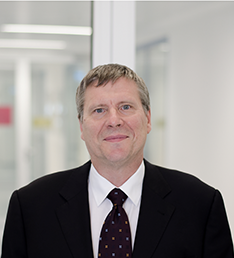
Rolf Aschenbrenner
Deputy Director and Head of SIIT
Department
Fraunhofer Institute (IZM)
Keynote – Heterogeneous Integration – A key enabler for a smart world
Abstract: The digitization process is currently taking place in almost all application areas. Topics like Internet of Things, Industry 4.0 and Artificial Intelligence are an expression of this. In order to support this, electronic systems must become more powerful and multifunctional. Caused by that system integration technologies have to be more variable and application oriented. Electronics industry has been evolving from a “hardware centric” application to a “user centric” application, leading the electronics system design from a “component assembly” to a “system integration” approach. Therefore two major challenges have to be solved in this context. On the one hand, Heterogeneous Integration through SiP follows naturally from the conceptual vision to build large, complex systems out of smaller functions separately packaged and require therefore very sophisticated technology platforms (e.g. wafer level or panel level assembly and packaging). At the same time application oriented assembly is very specific and reduces the average of production volumes. That means we need strong modularization and standardization progress covering a wide range of system applications.
In Heterogeneous Integration, an efficient and optimized interplay between the material properties and the packaging technology is especially needed to meet the various application challenges outlined above. An additional difficulty is that partial measuring and testing is generally not possible due to the complexity and tight integration of varying system components. Consequently, successful development is generally only possible if the functional system design, material and technology optimization and design for reliability are coordinated with each other at the beginning of the development process.
Heterogeneous Integration is and will be the key technology direction going forward. It is the high-yield opportunities for initiating a new era of technological and scientific advances to continue and complement the progression of Moore’s Law Scaling into the distant future.
Biography: Rolf Aschenbrenner received the B.S. degree in mechanical engineering from the University for Applied Science, GieBen, Germany, in 1986 and the M.S. degree in physics from the University of GieBen, Germany, in 1991. From 1991 to 1992 he has worked at the University of GieBen and in 1993, he joined the Research Center for Microperipheric Technologies at the Technical University of Berlin. Since March 1994 he has been employed at the Fraunhofer Institute for Reliability and Microintegration Berlin (IZM) where he is presently the Deputy Director and Head of the Department System Integration and Interconnection Technologies. He received the iNEMI International Recognition Award in 2005, the CPMT David Feldman Outstanding Contribution Award 2013 and the European Semi Award 2016. As a member of the IEEE EPS Society Board of Governors Rolf Aschenbrenner has worked as a European representative on the Conference Advisory Board Committee, and has played an active role in the globalization of IEEE EPS in terms of membership and chapter development. He served as IEEE EPS Vice President, Technical and IEEE EPS Vice President, Conferences. From January 201O until December 2011 he was IEEE EPS President and in 2012 he became IEEE Fellow.